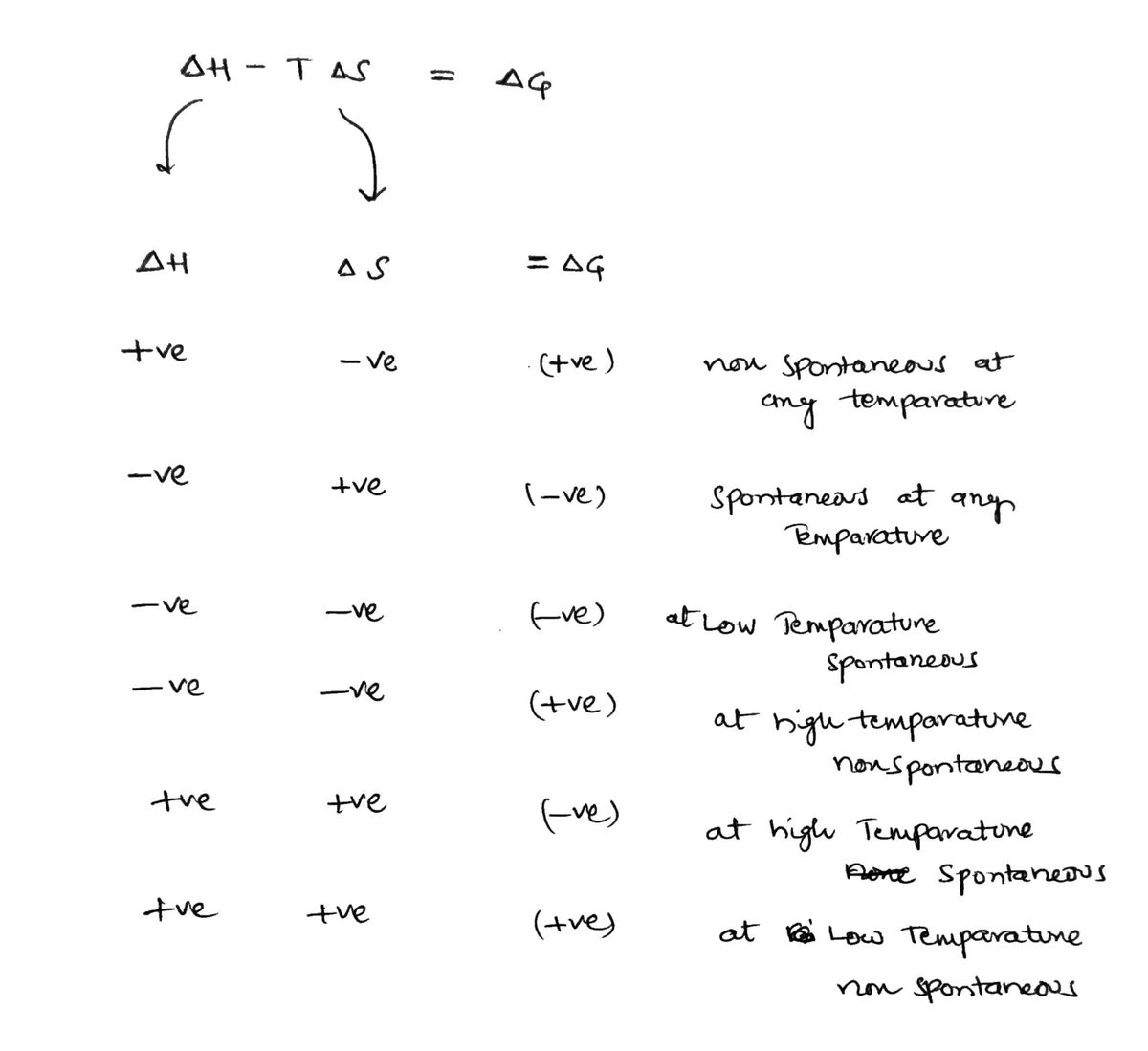Use the observations about each chemical reaction in the table below to decide the sign (positive or negative) of the reaction enthalpy AH and reaction entropy A.S. Note: if you have not been given enough information to decide a sign, select the "unknown" option. reaction A B с observations The reverse of this reaction is always spontaneous but proceeds slower at temperatures below 83. °C. This reaction is always spontaneous, but proceeds slower at temperatures below 105. °C. This reaction is endothermic and proceeds slower at temperatures below 69. °C. conclusions AH is AS is AH is As is ΔΗ is AS is X (pick one)) ✓ (pick one) positive negative unknown (pick one) S
Use the observations about each chemical reaction in the table below to decide the sign (positive or negative) of the reaction enthalpy AH and reaction entropy A.S. Note: if you have not been given enough information to decide a sign, select the "unknown" option. reaction A B с observations The reverse of this reaction is always spontaneous but proceeds slower at temperatures below 83. °C. This reaction is always spontaneous, but proceeds slower at temperatures below 105. °C. This reaction is endothermic and proceeds slower at temperatures below 69. °C. conclusions AH is AS is AH is As is ΔΗ is AS is X (pick one)) ✓ (pick one) positive negative unknown (pick one) S
Chemistry
10th Edition
ISBN:9781305957404
Author:Steven S. Zumdahl, Susan A. Zumdahl, Donald J. DeCoste
Publisher:Steven S. Zumdahl, Susan A. Zumdahl, Donald J. DeCoste
Chapter1: Chemical Foundations
Section: Chapter Questions
Problem 1RQ: Define and explain the differences between the following terms. a. law and theory b. theory and...
Related questions
Question

Transcribed Image Text:**Instructions:**
Use the observations about each chemical reaction in the table below to decide the sign (positive or negative) of the reaction enthalpy \( \Delta H \) and reaction entropy \( \Delta S \).
**Note:** If you have not been given enough information to decide a sign, select the "unknown" option.
---
**Table:**
| **reaction** | **observations** | **conclusions** |
|--------------|------------------|-----------------|
| **A** | The reverse of this reaction is always spontaneous but proceeds slower at temperatures below 83°C. | \( \Delta H \) is (pick one) <br> \( \Delta S \) is (pick one) |
| **B** | This reaction is always spontaneous, but proceeds slower at temperatures below 105°C. | \( \Delta H \) is (pick one) <br> \( \Delta S \) is (pick one) |
| **C** | This reaction is endothermic and proceeds slower at temperatures below 69°C. | \( \Delta H \) is (pick one) <br> \( \Delta S \) is (pick one) |
**Dropdown Menu Options for Selecting Signs:**
- positive
- negative
- unknown
---
In the table, users must select one option from the dropdown menus under "conclusions" for each reaction’s \( \Delta H \) and \( \Delta S \), based on the given observations for reactions A, B, and C.
Expert Solution
Step 1

Step by step
Solved in 2 steps with 2 images

Knowledge Booster
Learn more about
Need a deep-dive on the concept behind this application? Look no further. Learn more about this topic, chemistry and related others by exploring similar questions and additional content below.Recommended textbooks for you

Chemistry
Chemistry
ISBN:
9781305957404
Author:
Steven S. Zumdahl, Susan A. Zumdahl, Donald J. DeCoste
Publisher:
Cengage Learning

Chemistry
Chemistry
ISBN:
9781259911156
Author:
Raymond Chang Dr., Jason Overby Professor
Publisher:
McGraw-Hill Education

Principles of Instrumental Analysis
Chemistry
ISBN:
9781305577213
Author:
Douglas A. Skoog, F. James Holler, Stanley R. Crouch
Publisher:
Cengage Learning

Chemistry
Chemistry
ISBN:
9781305957404
Author:
Steven S. Zumdahl, Susan A. Zumdahl, Donald J. DeCoste
Publisher:
Cengage Learning

Chemistry
Chemistry
ISBN:
9781259911156
Author:
Raymond Chang Dr., Jason Overby Professor
Publisher:
McGraw-Hill Education

Principles of Instrumental Analysis
Chemistry
ISBN:
9781305577213
Author:
Douglas A. Skoog, F. James Holler, Stanley R. Crouch
Publisher:
Cengage Learning

Organic Chemistry
Chemistry
ISBN:
9780078021558
Author:
Janice Gorzynski Smith Dr.
Publisher:
McGraw-Hill Education

Chemistry: Principles and Reactions
Chemistry
ISBN:
9781305079373
Author:
William L. Masterton, Cecile N. Hurley
Publisher:
Cengage Learning

Elementary Principles of Chemical Processes, Bind…
Chemistry
ISBN:
9781118431221
Author:
Richard M. Felder, Ronald W. Rousseau, Lisa G. Bullard
Publisher:
WILEY